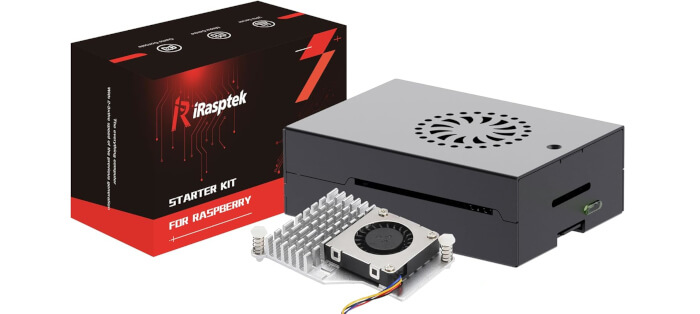Raspberry Pi 5
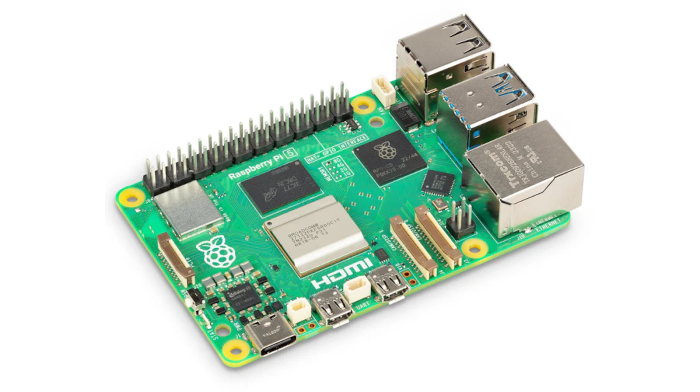
The main ticket item in the starter kit is, of course, the Raspberry Pi itself. The Pi 5 is available in 2GB, 4GB, 8GB and 16GB RAM models. The kit I’m evaluating provides the 8GB RAM version. If you’re planning on using the Pi as a desktop machine, 8GB of RAM is ample for most desktop users.
Let’s interrogate the Pi 5 with some Linux tools:
$ uname -a

OK, we’re running the 6.12 Linux kernel. Raspberry Pi OS (which is based on Debian) only uses longterm release kernels.
Let’s now interrogate the system using the inxi tool. It’s installed from a terminal with the command: $ sudo apt install inxi
Processor
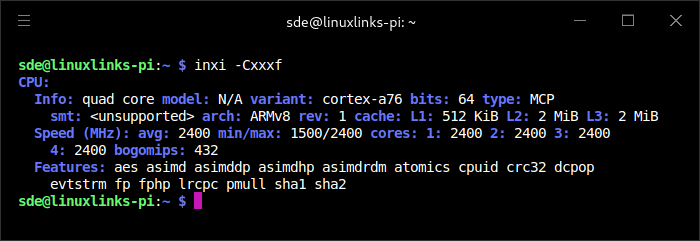
The Raspberry Pi 5 features a 64-bit Broadcom BCM2712 quad-core Arm Cortex-A76 processor running at a maximum of 2.4GHz. The bogomips shown is very low but that’s not indicative of benchmarks I’ve run.
What’s performance like compared to other mini PCs? Rather than quoting artificial benchmarks, let’s use a real world example. I’ve recorded the time it takes to build the source code for a wonderful open source music player, fooyin. It’s mostly CPU bound.
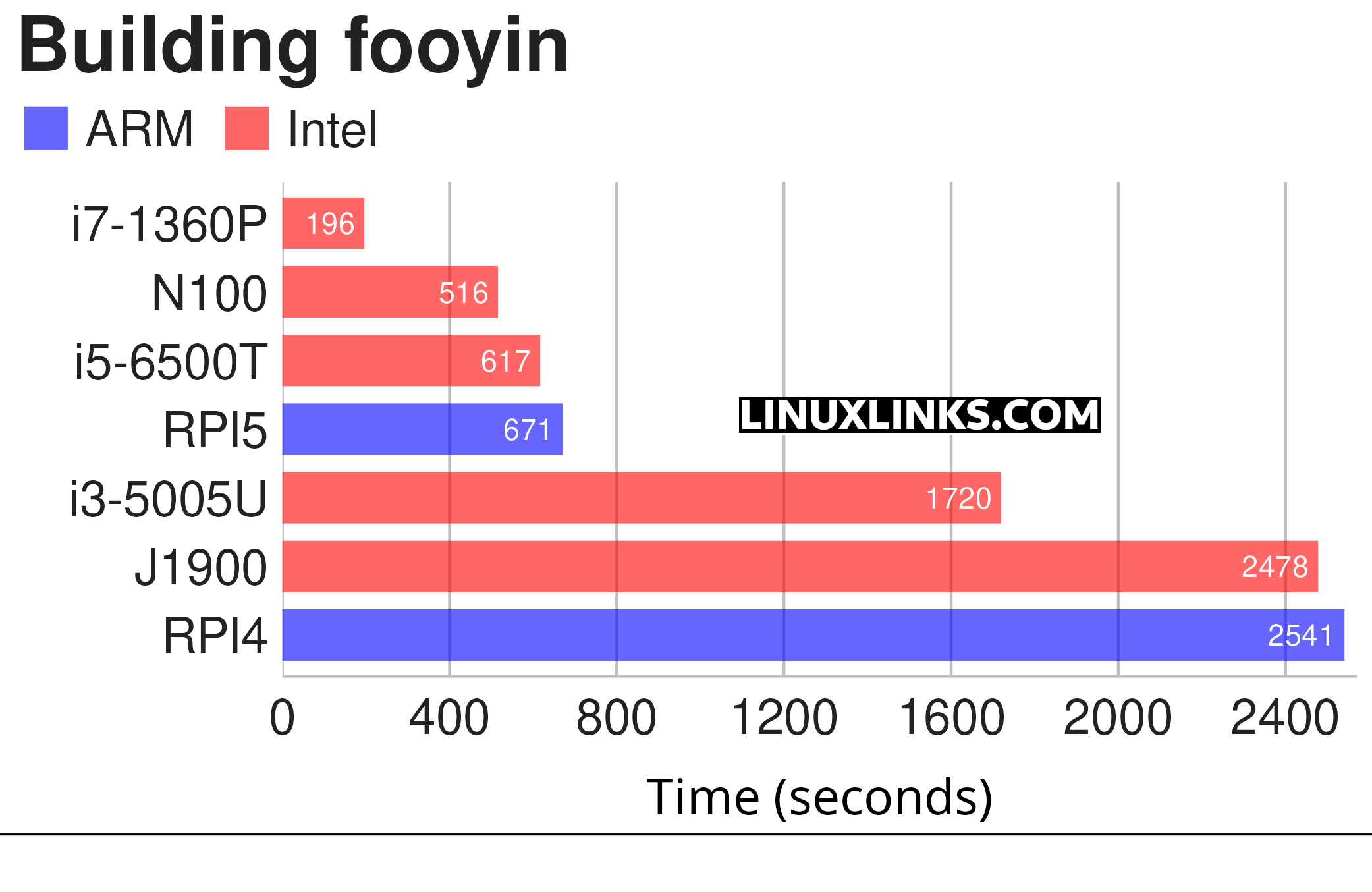
The Pi 5’s performance is not far off an Intel N100 processor, a hugely popular processor in budget mini PCs.
Graphics
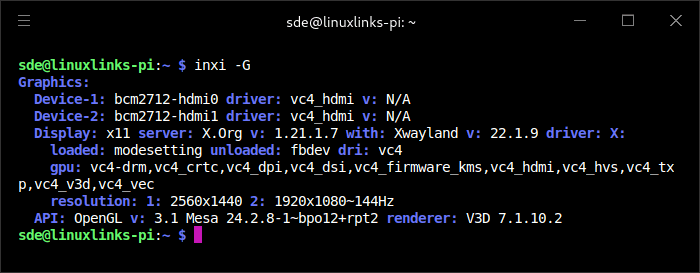
The Pi 5 has a VideoCore VII GPU, supporting OpenGL ES 3.1, Vulkan 1.2. Eagle-eyed readers will notice I’m using X.Org with 2 monitors. By default, Raspberry Pi OS runs Wayland. I reverted to X.Org for this article simply because my go to screenshot tool (ksnip) has limited support for Wayland.
The Pi 5 can drive dual 4K monitors at 60Hz refresh rate with HDR support.
Disk
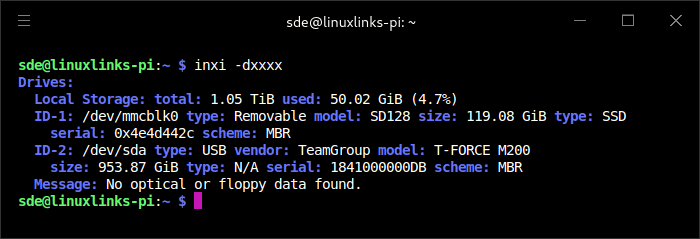
The 128GB SanDisk microSD card is a good size and a respected brand. You’ll have plenty of storage space to install a huge number of apps. I’ve also connected a 1TB external NVMe SSD (this isn’t supplied with the starter kit).
Memory

The Pi offers DDR4 RAM.
Audio
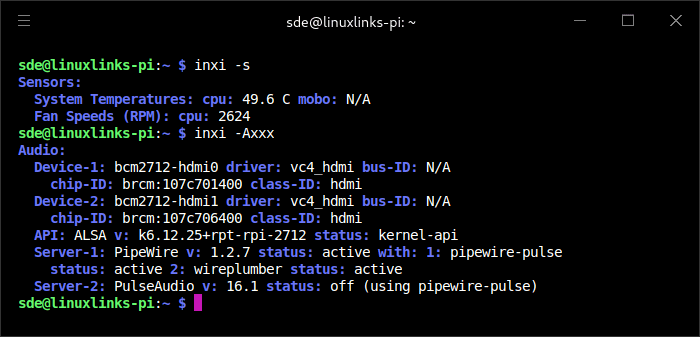
Bluetooth

There’s Bluetooth 5.0.
Network
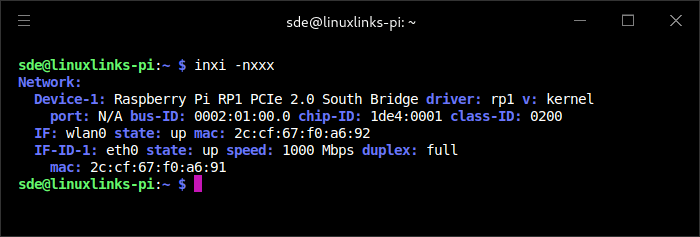
Ethernet is a fairly standard affair. it’s gigabit ethernet.
Temperature

By default, the fan in the active cooler starts spinning when the CPU reaches 50°C. As you can see, the fan is running at 2624 RPM but the temperature of the CPU is below 50°C. By default, the fan speed reduces when the temperature falls 5°C below a threshold. So the fan doesn’t turn off until the temperature falls to 45C (this can be changed).
At the time the system was under fairly light load and the room temperature is 21°C. I’ll talk more about the active cooler on the next page.
Next page: Page 3 – Metal case and Active Cooler
Pages in this article:
Page 1 – Introduction and Installation
Page 2 – Raspberry Pi 5 single board computer
Page 3 – Metal Case and Active Cooler
Page 4 – microSD card
Page 5 – Summary
All articles in this series:
| Raspberry Pi 5 Series | |
|---|---|
Hardware | |
| iRasptek Starter Kit | All the kit you need to get started with the Pi 5 |
| Pironman 5 Case Review | Transform the Pi 5 into a beautiful desktop mini PC |
| Passive Cooling the Pi 5 | Passively cool your Pi 5 the right way. Silent yet cool |
| Benchmarking | Benchmarking the Pi 5 against an Intel N100 mini PC |
| Overclocking | Let's increase the clock speed of the BCM2712 SoC |
| Power Consumption | Compare the power consumption of the Pi 5 with Intel Mini PCs |
| 2.5Gbps Networking | Improving the wired performance of the Pi 5 |
| WiFi | Improve WiFi performance of the Pi 5 |
| Desktop PC | Is the Pi 5 good value compared to an Intel N100 Mini PC? |
Configuration | |
| raspi-config | Useful text-based tool to configure the Pi 5 |
| PiGro | GUI tool that streamlines the process of managing the Pi 5 |
| Increase Swap Memory Size | Increase the swap size from 512MB to 2GB |
| ZRAM swapdrive | Simple script to use a ZRAM swapdrive instead of a swapfile |
Software | |
| Installing Software | Different ways to install software on the Pi 5 |
| df snap pollution | Replace df with dysk |
| Ollama GUI | Running Large Language Models on the Pi 5 |
| Music Players | GUI and TUI music players explored |
| Internet Radio | Exploring the best options for both GUI and TUI software |
| Many software articles are planned. Stay tuned! | |
